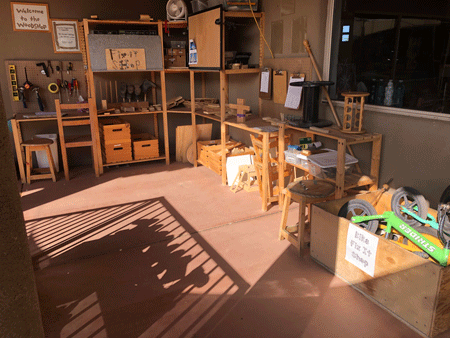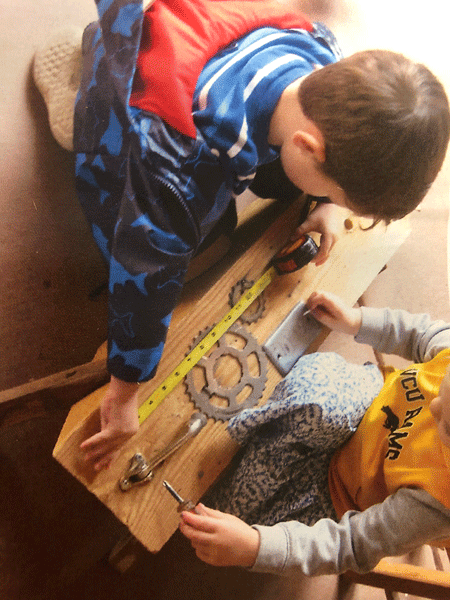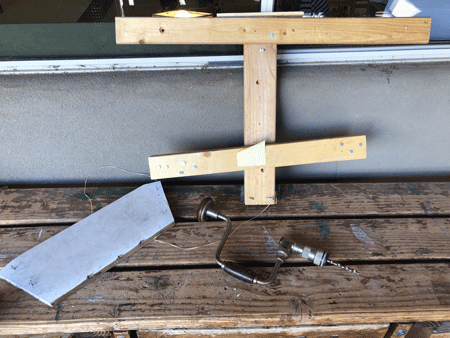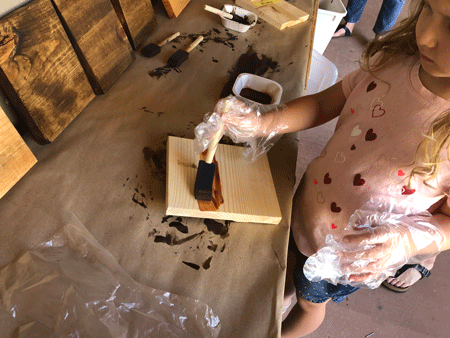Constructing Collaboration
It is 10:30am on a Wednesday morning at Pinnacle Presbyterian Preschool. In a shady spot under the eaves of the covered walkway, three children stand at a long wooden counter. One four year old girl expertly swings a hammer, nailing together two pieces of wood in what appears to be an airplane shape. Next to her, a three year old from another class watches closely, then gives her own nail a solid whack. She smiles with satisfaction and shows her work to the big girl. The third child, also a seasoned 4 year old woodworker, uses a saw on a piece of wood held tightly in a clamp. “This can be the tail!”, he tells his classmate as he carefully maneuvers the saw back and forth.





Guiding this work is Miss Susanne, PPP’s very own Project Coordinator. Miss Susanne fills many important roles at our school, but among the children, she is best known as the keeper of the tools — real tools the children use to construct anything imaginable. When Miss Susanne enters a classroom, children flock to her, eager to discuss their newest project idea or tell her about a tool they used at home that weekend. The children work with her in small groups, and often these groups are made up of children from various classrooms based on shared interests. Projects might be as simple as creating an airplane from two pieces of wood in one hour, or as complex as designing and constructing a wooden go kart over the course of several months.
Miss Susanne sees collaboration as the common thread running through each woodworking project, and she is inspired by watching the children learn from and listen to each other. She especially notices this in mixed-age projects, where the older children are able to say, “I can do this, and I can teach you to do this, too!” She also sees a great deal of negotiation at the workbench, both verbal and nonverbal. Negotiation of ideas, space, and shared tools are skills she continually watches develop over the course of a project.
Miss Susanne believes this project work has been successful because she keeps the groups small, and children have the opportunity to revisit woodworking repeatedly over the course of the year. While she could have ten children learning how to use a hammer at the same time, the projects would lose complexity, and offer fewer language opportunities and chances for meaningful collaboration.
Some of Susanne’s favorite woodworking projects over the years have been a full-size foosball table (try it out in our Outdoor Classroom!), a functional go kart that had one amazing run before it crashed into a tree last year, and a wooden Barbie doll with securely nailed yarn hair (the problem-solving for the hair alone was noteworthy!). What does Miss Susanne have in mind for next year? The answer, my friends, is locked away in the imaginations of our future project workers. We can’t wait to see what their collaborations will construct!
